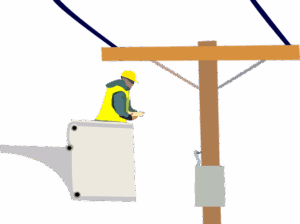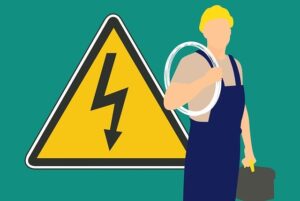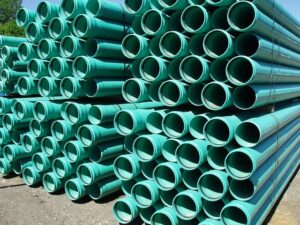Seasonal HVAC Maintenance: A Comprehensive Guide for Optimal System Performance
Regular HVAC maintenance is key for ensuring your system operates efficiently, especially in areas with extreme weather. To avoid costly repairs and extend the life of your system, schedule professional HVAC repair services during off-peak seasons for comprehensive checks, c…….

Regular HVAC maintenance is key for ensuring your system operates efficiently, especially in areas with extreme weather. To avoid costly repairs and extend the life of your system, schedule professional HVAC repair services during off-peak seasons for comprehensive checks, cleanings, and adjustments. Routine tasks include inspecting and replacing air filters every one to three months, cleaning coils, straightening fins, checking refrigerant levels, and ensuring all moving parts function properly. Professional HVAC repair technicians should handle specialized tasks like refrigerant level adjustments. Regular upkeep not only maintains system efficiency but also contributes to better air quality, energy savings, and consistent comfort throughout the year, minimizing the need for emergency repairs. Remember to keep your HVAC system clean, clear of debris, and well-maintained to prevent issues that could lead to reduced performance or system failure. Regular filter maintenance is particularly important as it directly impacts system efficiency and indoor air quality, potentially saving on energy bills and avoiding expensive fixes down the line. By investing in proactive HVAC repair and maintenance, you can ensure your system remains reliable and cost-effective over time.
Ensuring your home’s HVAC system operates at peak efficiency is a year-round endeavor, pivotal for comfort and energy conservation. This article delves into the essential practices of seasonal HVAC maintenance, guiding you through meticulous checks, effective cleaning routines, and strategic adjustments tailored to the season’s demands. From understanding the critical role of filters in your system’s performance to recognizing signs of wear that may necessitate repair or replacement, this guide equips you with comprehensive knowledge for both DIY maintenance and knowing when professional intervention is essential. Learn how to test and troubleshoot your HVAC system to preemptively address issues, thereby maintaining safety and extending your system’s lifespan. Discover cost-effective strategies that contribute to the longevity and reliability of your HVAC unit, as well as tips for fine-tuning energy efficiency throughout the year. Whether you’re navigating the chill of winter or the heat of summer, adhering to a structured maintenance schedule ensures your system provides consistent comfort, all while keeping an eye on the bottom line.
- Understanding the Importance of Seasonal HVAC Maintenance
- Key Components to Inspect During HVAC Seasonal Checks
- Steps for a Thorough HVAC Cleaning Routine
- How to Test and Troubleshoot Your HVAC System Preventively
- The Role of Filters in HVAC Performance and Efficiency
Understanding the Importance of Seasonal HVAC Maintenance

Regular seasonal maintenance of your HVAC system is a proactive measure that extends its lifespan and ensures optimal performance, especially in areas with extreme weather conditions. As the seasons change, so do the demands on your heating and cooling systems. Winter’s cold air requires your heater to work harder, while summer’s heat pushes your air conditioning to its limits. This consistent use can lead to wear and tear, potentially causing system malfunctions or inefficiencies if not addressed promptly. Scheduling HVAC repair services during less demanding seasons allows for thorough inspections, cleaning, and adjustments, which can prevent costly emergency repairs later on. By keeping your system clean and well-maintained, you enhance its ability to maintain comfortable indoor temperatures, conserve energy, and reduce utility bills. This seasonal upkeep is not just about comfort; it’s a critical aspect of home maintenance that contributes significantly to the longevity and reliability of your HVAC system.
Key Components to Inspect During HVAC Seasonal Checks

During seasonal maintenance checks, it is imperative to focus on the key components of the HVAC system to ensure optimal performance and longevity. Homeowners should begin by inspecting the air filters, which play a pivotal role in maintaining air quality and system efficiency. Clogged or dirty filters can restrict airflow and lead to a decrease in performance, potentially causing your HVAC system to work harder and consume more energy. It is recommended to replace or clean these filters every one to three months, depending on the type of filter and local environment.
Next, attention should be directed towards the system’s coils, both indoor and outdoor. The evaporator coil inside the home and the condenser coil outside are crucial for heat exchange processes. A buildup of dirt or debris can impair their ability to effectively transfer heat, which can significantly affect cooling efficiency. During maintenance, these coils should be cleaned, and fins should be straightened if bent, to ensure proper airflow. Additionally, checking the refrigerant levels is a task best left to HVAC repair professionals, as it requires specialized knowledge and tools. Proper refrigerant levels are essential for the system’s operation and performance; undercharged or overcharged systems can lead to inefficiency or even damage to the compressor. Ensuring that all moving parts, including fans and motors, are operating smoothly and without excessive noise is also part of a comprehensive HVAC seasonal check. Lubricating moving parts as needed and checking for signs of wear and tear will help prevent unexpected breakdowns and extend the lifespan of your HVAC system. Regular maintenance by skilled technicians in HVAC repair can prevent small issues from becoming major problems, ensuring that your HVAC system operates reliably throughout the year.
Steps for a Thorough HVAC Cleaning Routine

Maintaining your HVAC system’s cleanliness is paramount for its efficiency and longevity. A routine seasonal maintenance check should include a thorough cleaning of various components within the system. To ensure your HVAC operates at peak performance, start by turning off power to the unit to prevent any electrical hazards during cleaning. Next, inspect and clean or replace the air filter, which is crucial for maintaining air quality and preventing debris from entering the system. Use a soft-bristled brush or vacuum with a hose attachment to remove accumulated dust and dirt gently.
After addressing the air filter, move on to the outdoor unit. Clear away any foliage, debris, or obstructions surrounding the unit, ensuring at least two feet of clearance for optimal airflow. With the use of a garden hose, rinse the exterior fins of the unit to remove any accumulated grime. Be cautious not to bend or damage the fins. Then, straighten any that are bent using a fin comb, a tool specifically designed for this purpose. Inside, inspect the coils and evaporator for signs of dirt or mold. Use a coil cleaner, following the manufacturer’s instructions, to safely remove buildup without harming the coating. Lastly, lubricate all moving parts, check the electrical components for wear, and tighten any loose connections. For complex issues or if you lack the necessary skills, it’s wise to consult a professional HVAC repair service to perform these tasks. Regular cleaning and maintenance can prevent minor issues from escalating into costly repairs, ensuring your HVAC system functions efficiently throughout the year.
How to Test and Troubleshoot Your HVAC System Preventively

Regular seasonal maintenance of your HVAC system is pivotal for its longevity and efficiency. To ensure your system operates at peak performance, it’s advisable to perform routine checks and tests. Begin by inspecting air filters; clogged or dirty filters can impede airflow and reduce the system’s effectiveness. Replace or clean these filters as recommended by the manufacturer, typically every 1 to 3 months, depending on your environment.
Next, verify the thermostat settings to confirm accurate readings and proper operation. Calibrate it if necessary to ensure precise temperature control. Beyond this, examine the HVAC’s exterior unit for debris accumulation, as obstructions can hinder airflow and cause overheating or frost buildup. Clear any foliage or trash from around the unit and hose it down to remove dirt and grime. Inspect the indoor components for similar issues, paying close attention to the blower motor and fan blades, which should be free of dust and debris. Should you encounter any anomalies in performance, or if your system fails to start, it may be time to call a professional for HVAC repair services. Early detection and addressing of minor issues can prevent costly repairs down the line and maintain the comfort levels within your home throughout the year.
The Role of Filters in HVAC Performance and Efficiency

Regular seasonal maintenance of HVAC systems is crucial for ensuring optimal performance and energy efficiency, a task that often includes inspecting and cleaning the system’s filters. Filters within an HVAC system play a pivotal role in maintaining air quality and system functionality. They act as barriers to capture dust, pollen, and other airborne debris before they enter the system and circulate throughout your living or working space. Over time, these filters can become clogged, restricting airflow and reducing the efficiency of the HVAC unit. A clogged filter forces the system to work harder to distribute conditioned air, leading to increased energy consumption and potential system malfunction. This is where professional HVAC repair services come in handy, as they can assess the state of your filters and provide recommendations or replacements when necessary. By ensuring that filters are clean and properly functioning, homeowners and facility managers can significantly enhance the performance of their HVAC systems, thereby improving comfort levels while also saving on energy costs. Regularly scheduled maintenance checks, which include filter cleaning or replacement, are a cornerstone of proactive HVAC care, safeguarding against more costly repairs down the line.
Regular seasonal maintenance of your HVAC system is pivotal for maintaining its efficiency and longevity. By understanding the significance of this upkeep, homeowners can prevent costly repairs and ensure their systems operate at peak performance. This article has outlined the critical components to inspect, the cleaning routine necessary for a well-functioning HVAC, and the importance of filters in regulating system efficiency. Additionally, we’ve explored effective testing and troubleshooting methods to head off potential issues before they escalate. Implementing these practices not only extends the lifespan of your HVAC equipment but also promotes a healthier living environment and can lead to significant savings on energy bills. Therefore, incorporating seasonal maintenance checks is an investment that pays dividends in comfort, cost savings, and system reliability.







